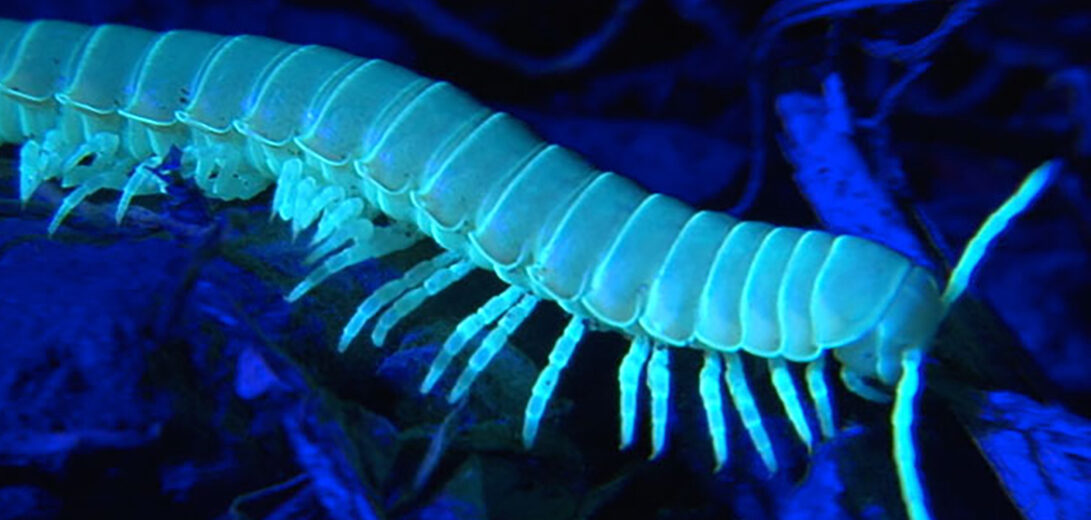
Sierra luminous millipedes reside in live oak and giant sequoia forests, and also in meadows. They can be found in Santa Monica, Tehachapi, and southern Sierra Nevada Mountains. As the title presents, these millipedes use bioluminescence. Perhaps as a possible defense/warning mechanism. It is not yet known how they get to develop their mutant power of glowing in the dark. Research still continues.
First the Stats…
Scientific name: Motyxia sequoiae
Length: 1.6 inches
Lifespan: Unknown
Now on to the Facts!
1.) There are 12,000 known species of millipedes and only 8 known to illuminate.
2.) They use their bioluminescence to warn nocturnal (active at night) predators to beware.
3.) California is the only known place on earth where you can find glow-in-the-dark millipedes.
4.) Naturally, Sierra luminous millipedes are nocturnal (active at night) and spend their days hidden in leaf litter and soil.
5.) Although blind they still manage, perhaps due to magnetic field variances, to know when it’s dark.
But wait, there’s more on Sierra Luminous Millipede!
6.) It is still uncertain why these arthropods glow. It is thought, after a field study, that it is solely to warn of the potential for a painful death upon ingesting them.
7.) The female lays between 70 – 160 eggs.
Did you know…?
Millipedes are capable of generating a hydrogen cyanide toxin, that can be lethal if ingested!
8.) In 2 weeks the larvae hatch and go through 7 instars (developmental stages) before reaching adulthood.
9.) They eat detritus (leaf litter).
10.) Like other millipedes, they also play host to tiny mites that help to clean bacteria from their exoskeleton.
Now a Short Sierra Luminous Millipede Video!
Also, check out the Critter Science YouTube channel. Videos added frequently!
Want to suggest a critter for me to write about? Let me know here.



